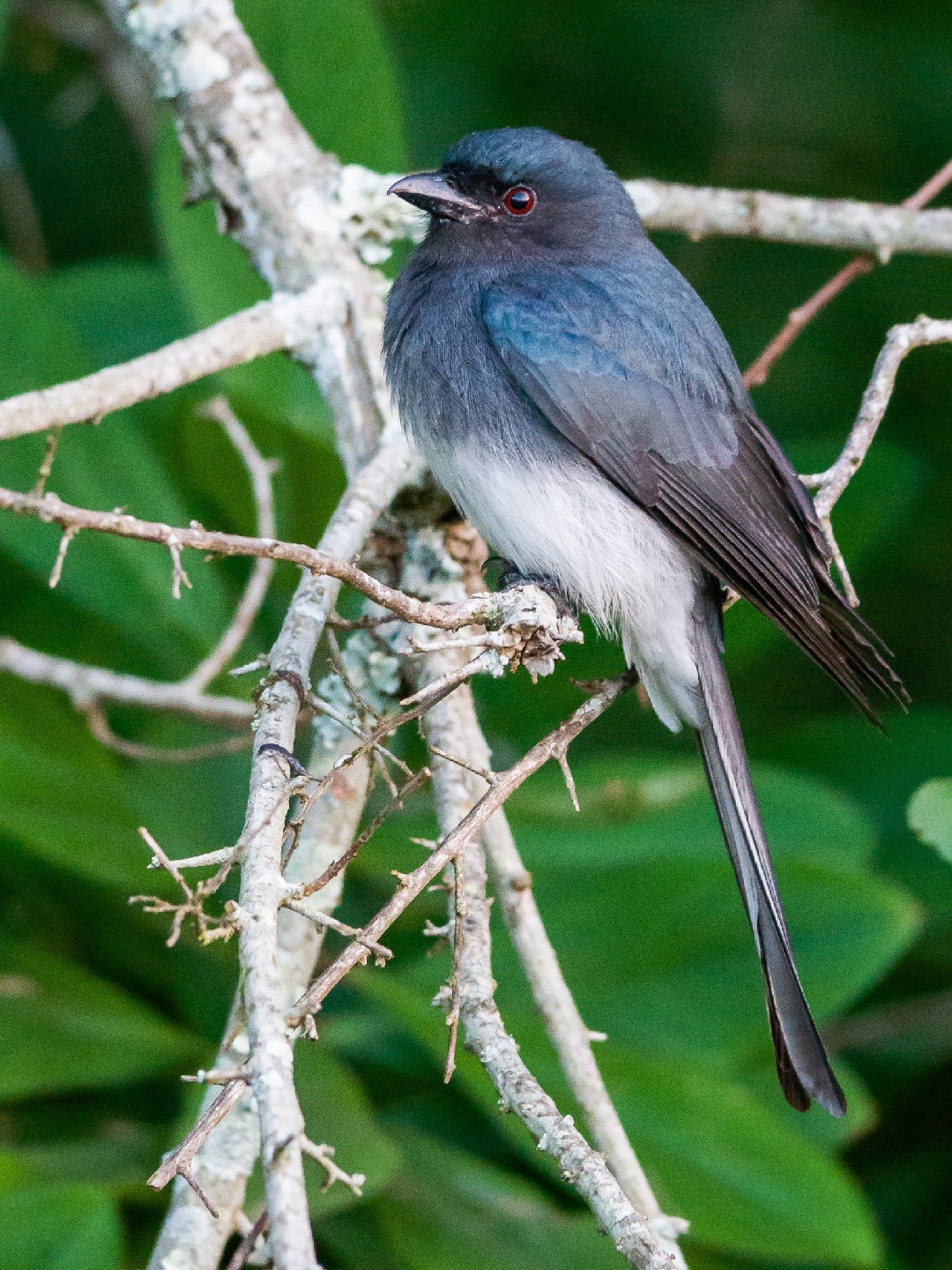White-bellied Drongo
A species of Drongos Scientific name : Dicrurus caerulescens Genus : Drongos
White-bellied Drongo, A species of Drongos
Botanical name: Dicrurus caerulescens
Genus: Drongos
Content
Description General Info
Description
This drongo is black without any glossy feathers on the upperside and greyish on the throat and breast, while the belly and vent are entirely white in the Indian form which is the nominate subspecies. The fork of the tail is less deep than in the black drongo which is often seen in the same habitats. Young black drongo's can have a lot of white on the underside but it is usually scaly in appearance. The Sri Lankan forms insularis of the northern dry zone and leucopygialis of the southern wet zone have the white restricted to the vent. Birds that are less than a year old lack the white on the underside but are browner above and greyish below. Males have a very slightly shorter tail on average than females. The size of the birds varies clinally with northern birds larger. The extent of white on the underside also declines with size although there is a lot of local variation. The Sri Lankan forms leucopygialis and insularis are darker than the Indian form and there is some intergradation within the Sri Lankan forms. The species is believed to be closely related to Dicrurus leucophaeus but has not be confirmed with molecular sequence studies. Both the white-bellied drongo and the black drongo share a diploid chromosome number of 68. 
Size
24 cm
Nest Placement
Tree
Feeding Habits
White-bellied Drongo is primarily insectivorous, capturing flying insects like crickets, moths, and termites. It also consumes small birds and nectar, contributing to pollination. White-bellied Drongo hunts from perches, diving to snap prey with agility. It exhibits crepuscular activity, sometimes engaging in nocturnal feeding near lights.
Habitat
White-bellied Drongo occupies a range of wooded environments such as dry scrublands, moist deciduous forests, bamboo forests, and rural green spaces. They adapt to agricultural landscapes like tea and rubber plantations. Their habitat extends across lowlands and hilly areas, reaching up to 2000 meters in elevation along the Himalayas and 1500 meters in the south. They prefer forest peripheries rather than dense woodlands and inhabit zones with diverse rainfall patterns.
Dite type
Insectivorous
General Info
Feeding Habits
Bird food type
Behavior
Birds are often seen singly or in groups of up to three individuals, sometimes joining mixed-species foraging flocks. They perch upright close to the tops of trees and capture insects in the air with short aerobatic sallies. Larger insects may be captured using their claws. The song of this drongo is a series of staccato notes interspersed with clear notes and may include mimicry of other bird calls. The breeding season is from February to July. The cup nest is similar to that of the black drongo but is usually made up of more twigs and is well lined with grass. Two to four eggs, pale salmon coloured with reddish blotches on the broad end, are laid in the nest which may be 20 to 30 feet high in the fork of a tree. These are aggressive at the nest and will potential threats much larger than themselves. When mobbing they have been observed to imitate the alarm calls of squirrels or the mewing of a cat and is known to join to mixed-species foraging flocks. Although primarily insectivorous they are opportunistic and are known to prey on small birds. Like other drongos, they use their feet while handling their prey. They have been known to take insects attracted to artificial lights late at dusk. They also visit large flowers for nectar, particularly Bombax, Erythrina and may pollinate species such as Helicteres isora. The bird louse Philopterus kalkalichi Ansari, 1955 whose type host is the black drongo has also been found on white-bellied drongos. 
Distribution Area
The white-bellied drongo is a resident breeder in India and Sri Lanka. This species is usually found in dry scrub or open forests. The distribution is restricted to peninsular India south of the Himalayas and to the west of the Gangetic delta bounded on the west by the Aravallis. 
Species Status
Not globally threatened.
Scientific Classification
Phylum
Chordates Class
Birds Order
Perching birds Family
Drongos Genus
Drongos Species
White-bellied Drongo 